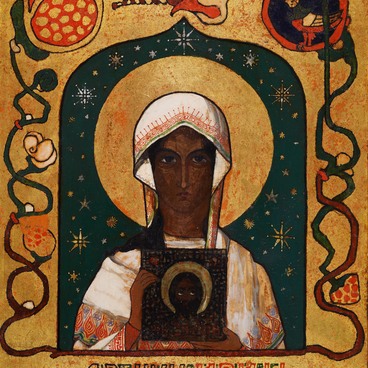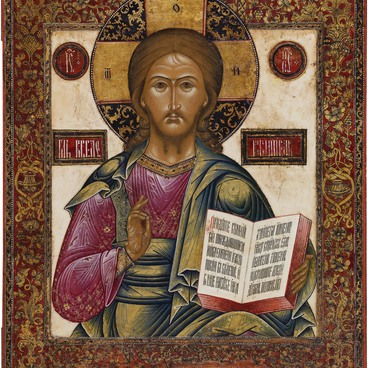The annunciation of the Holy Virgin is an event described by the Gospel and one of the Twelve Major Festivals, i. e. the most important holidays in Christianity. According to the Gospel narrative, the Archangel Gabriel appeared before the Virgin Mary and announced the Good News to Her: ‘The Holy Spirit will come on you, and the power of the Most High will overshadow you. So the holy one to be born will be called the Son of God’ (Luke 1:35). The oldest image of the Annunciation was found in Roman catacombs; a 5th century mosaic can be seen on the façade of the triumphal arch in the Santa Maria Maggiore basilica (church) in Rome, Italy. In Orthodox churches, the Holy Doors leading to the altar space are crowned with Annunciation pictures.
In icons, the Virgin Mary is painted on a throne, sometimes in front of an open book, occasionally a thread ball and purple yarn. The idea behind that image was that the Holy Virgin was weaving a veil for the Temple of Jerusalem. Also in front of her, there is usually the Archangel Gabriel with a staff and a beam of light with the Holy Spirit in white dove disguise in it.
In icons, the Virgin Mary is painted on a throne, sometimes in front of an open book, occasionally a thread ball and purple yarn. The idea behind that image was that the Holy Virgin was weaving a veil for the Temple of Jerusalem. Also in front of her, there is usually the Archangel Gabriel with a staff and a beam of light with the Holy Spirit in white dove disguise in it.

